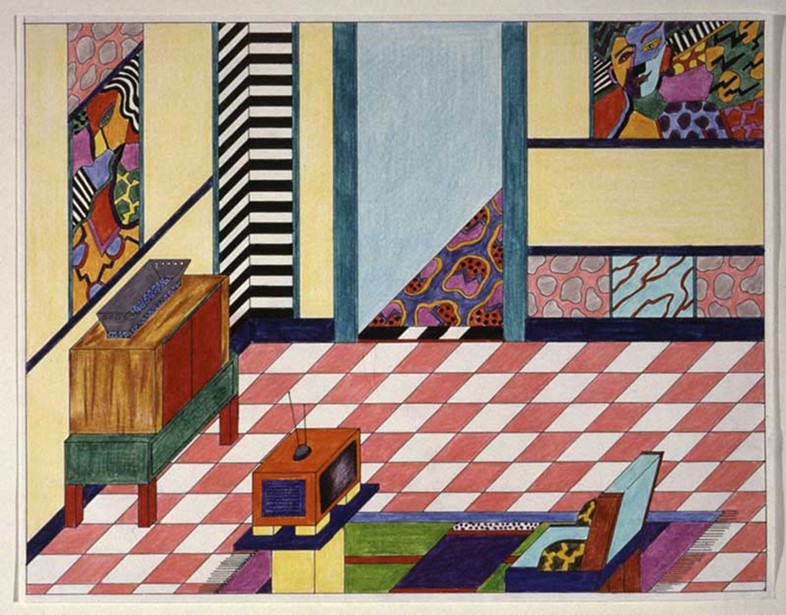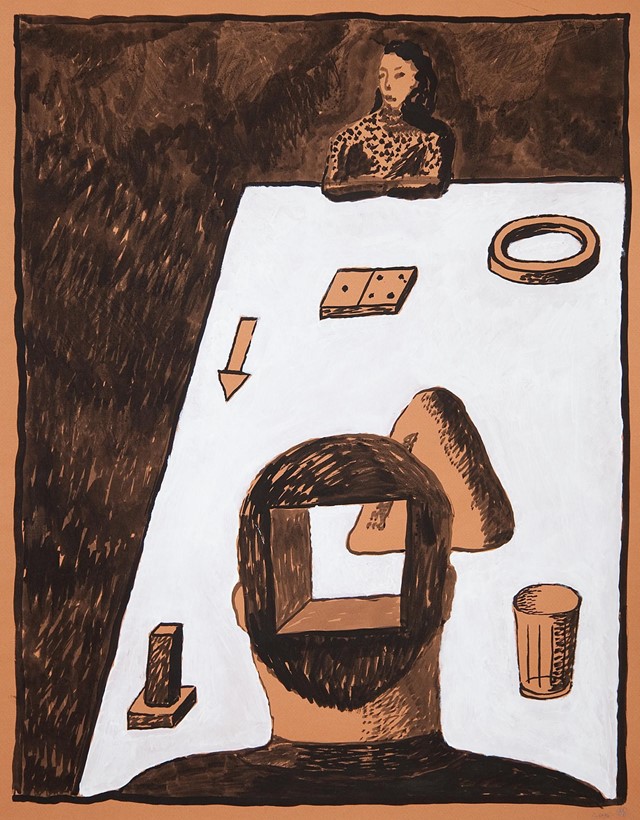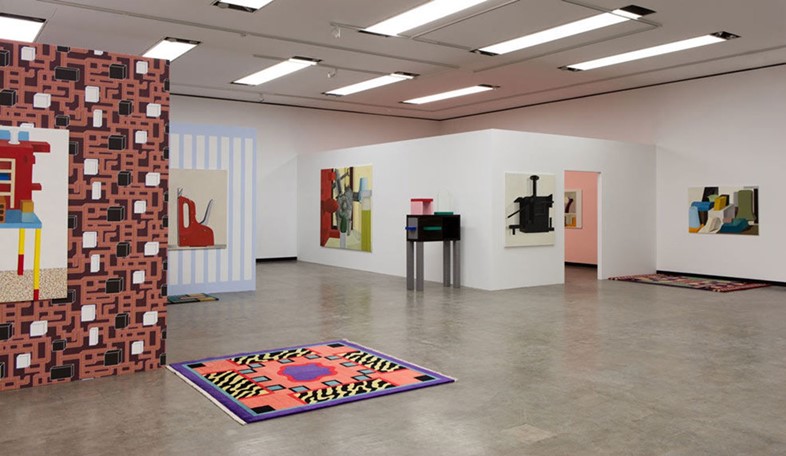As a new retrospective of the artist, designer and Memphis Group founder's prolific output opens in Austria, we reflect upon her impressive and ever-growing body of work
Who? Painter, sculptor, textile designer and Memphis Group founder Nathalie Du Pasquier is a multi-disciplinarian in the truest sense of the word, turning her hand to media as her inclination, rather than her previously established skill-set, demands it. As such, her biography thus far reads like a what’s what of creative pursuits in the latter half of the 20th and early-21st century.
Born in Bordeaux in 1957, Du Pasquier moved to Milan via Gabon, Africa, in 1979 to pursue textile pattern design for fashion brands including Naj Oleari and Fiorucci. While Gabon had a formative influence on her style and colour palette, it was in Milan that her career well and truly took off. She first became known for founding Italian design and architecture collective the Memphis Group alongside Ettore Sottsass in 1981, two years after her arrival in Italy, during which time she worked predominantly in covering surfaces with her vibrant designs. During this period “she designed numerous ‘decorated surfaces’: textiles, carpets, plastic laminates, and some furniture and objects,” reads the modest biography on her website, but “in 1987 painting became her main activity.”
She has focused her output on brush and palette ever since, with brief diversions to dabble in print design for fashion, or to take part in exhibitions, or publishing – she recently created a book of her work entitled Don’t Take These Drawings Too Seriously with Apartamento founder Omar Sosa – and continues to paint prolifically today.

What? Du Pasquier’s preferred subject matter – shape, form, colour and pattern – has led her from one medium to another for close to three decades, and has continued to develop with each passing year to become increasingly complex and intuitive. “My first influences were, of course, my parents,” she told Frieze last year. “From my mother, who was an art historian, I learned a classical way of looking at classical art; my father, who was a virologist, taught me a more naturalistic perspective on different aspects of the world.” The prevalent African influence in 1950s and early 60s Bordeaux was to have a powerful influence on the young artist: she travelled to Gabon shortly after graduating, and there began working on her distinctive drawings, which featured African-influenced colour palettes and forms. These persisted through the post-modernist Memphis era, and continue to crop up in her work now, though passing time has seen her inch slowly away from the rainbow-bright hues of her work in furniture and objects with the Memphis Group, to focus equally on neutral shades and increasingly complex ideas.

The body of Du Pasquier’s work which recently showed at Canada’s Cooper Cole Gallery made for a fine example of such reapplication. In this collection, her deeply developed understanding of spatial relationships, accrued over years of working with furniture and in three dimensions, is reapplied to the two-dimensional canvas, creating puzzling compositions and shifting landscapes which dally between the real and the surreal. “A cube of bricks, a cylindrical glass, a hole through the table, or a void in the head all serve to remind the viewer that traditional perspective still applies,” the gallery offered, by way of explaining the trickery at hand. “These works invite viewers to create connections through recurrent visual elements across Du Pasquier's entire body of work, while also speaking to notions from early modern painting regarding the role of the artist's eye, hand and mind in the creative process.”

Why? From July 15 through until November 13, a large proportion of Du Pasquier’s work is on display at Kunsthalle Wien, in a joyful and unusually comprehensive retrospective entitled BIG OBJECTS NOT ALWAYS SILENT. Presenting a semi-chronological trail from her early Memphis days through to more recent work focusing on ‘the relationship between forms’ in both painting and sculpture, the show is a rare and not-to-be-missed opportunity to admire the handiwork of one of the greatest tastemakers in our time, up-close.

Nathalie Du Pasquier: BIG OBJECTS NOT ALWAYS SILENT runs until October 13th, 2016 at Kunsthalle Wien, Austria.
